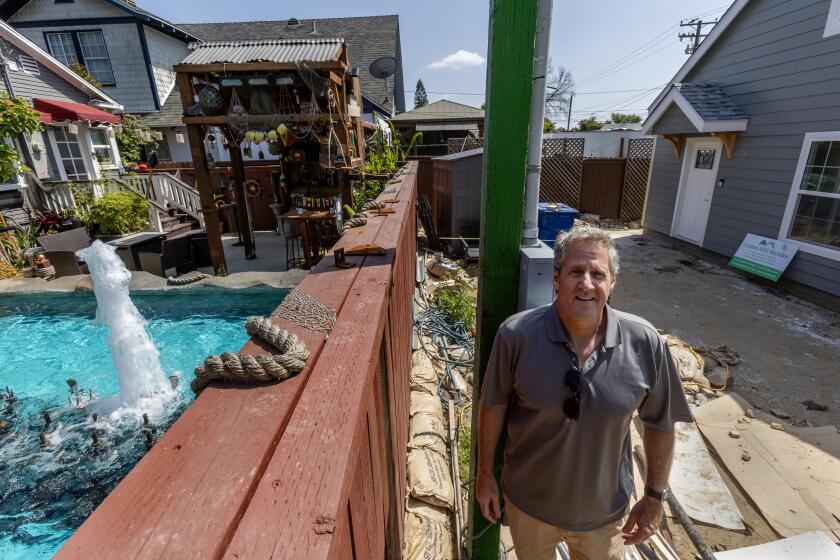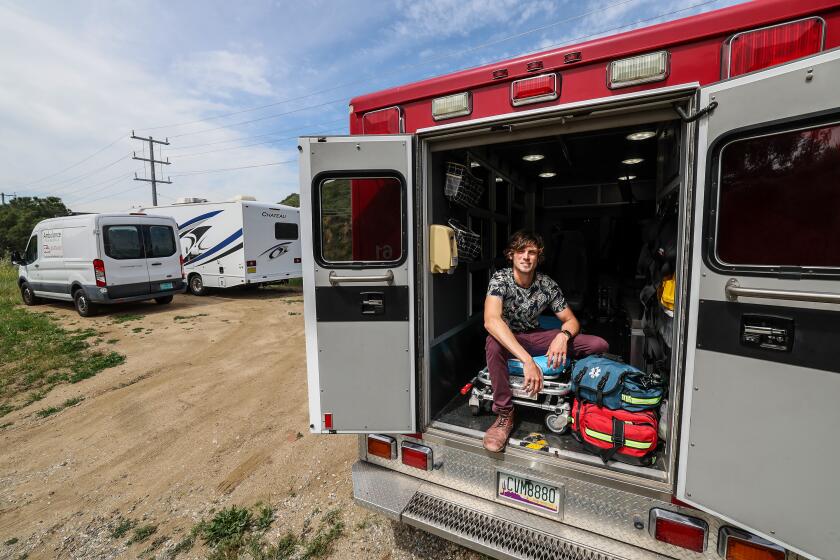Builders Go Back to Drawing Board for Comforts of Home, Asian-Style : Stairways in harmony with Chinese metaphysics and kitchen bins for 50-pound rice bags cater to buyers’ cultural background.
Amenities, amenities. The sales people selling some of the county’s newest suburban tract homes are happy to point them out.
*
The low cabinet in the foyer. The number “8” appearing twice in the address. Check out the huge bin by the kitchen sink. And the staircase that makes a last-minute curve away from the front door.
The continued arrival of moneyed Asian immigrants, especially Taiwanese, has pushed Southern California’s construction giants into a new mode of home design--one that caters to the culture’s physical comfort and metaphysical beliefs.
The cabinet is for the shoes that are never worn into the house. The number 8 is considered lucky, according to Chinese numerology. The bin is so that 50-pound bags of rice do not have to be lugged across the kitchen and can conveniently be rinsed before cooking.
And the curved staircase is just one element of a complex body of Chinese metaphysical belief called feng shui, which links design details of a building with the happiness and harmony of the lives within.
A staircase that faces the front door would allow money to flow down the stairs and out of the house, according to feng shui principles, thus the curve. The front door should not be directly across from the back door, which allows energy to flow right out of the house. Trees and lampposts must not block the front entrance, where they would ensnare good energy.
Five years ago, El Toro architect Phillip Pekarek had never heard of feng shui . Today, about two-thirds of the homes he designs take it into account.
“Now if we design four model homes, at least two of them will be in accordance with feng shui ,” Pekarek said.
He also has practical concerns in mind. For example, he is scaling down the height of showers, kitchen counters and cupboards to accommodate shorter Asian homeowners.
*
Some of the tracts marketed to Asians are in communities such as Thousand Oaks and Glendale, but the majority are in the San Gabriel Valley, which since the late 1970s has been a magnet for Chinese immigrants.
The cultural touches are important to Billy Leung, 31, an engineer who recently toured the models at Shea Homes’ 200-home City Lights tract in Rowland Heights. Up to 80% of City Lights buyers are of Asian heritage and the sales office features photos of the local Hong Kong Market and the Hsi Lai Buddhist Temple in Hacienda Heights.
*
Leung checks to make sure the staircase does not face the front door. He is pleased that the homes offer so many bedrooms, which have been included because in Chinese culture, elderly parents often live with their offspring’s family. He is also keenly interested in the high-powered gas range that puts out a searing flame hot enough for proper stir-frying.
At City Lights, an industrial-strength gas range with a built-in wok holder is a popular $850 option.
Terence Hanna, president of the Los Angeles division of home builder J.M. Peters Co., says his firm has modified building plans in midstream to ensure that the front door will not go by the staircase. The Orange County-based firm is constructing 16 homes in Walnut that will cost about $500,000 each.
“There is an added cost to making these homes harmonious, but the benefits are greater sales and happier buyers,” Hanna said.
Kevin Lawrence, a sales manager for the Panorama tract in Shea Homes’ Rowland Heights development, has applied for address changes on properties where the number 4--which represents death in Chinese numerology--appears too readily.
Joanne Haberman, who sells homes for Kaufman & Broad’s 79-home tract California Chateau in West Covina, says she and other agents exchange tips about all aspects of Asian culture.
“The more I can learn about my buyer, the better off I am,” she said.






